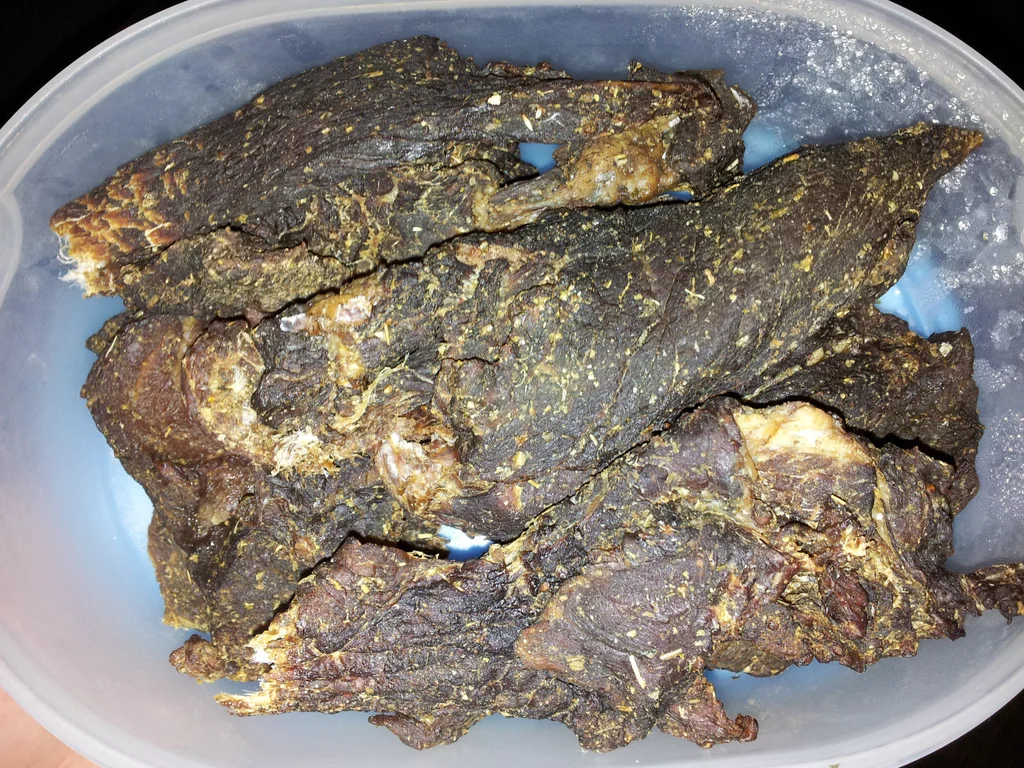
Exploring Air Dried Meat: A Deep Dive into Biltong vs Jerky
Air dried meat has been a cultural staple for centuries and is the original powerhouse of protein on the go. Two of the more commonly known are biltong and jerky. They are made differently and have unique flavours and prep methods that make them stand out individually. In this article, we unlock the world of air dried meat and how it differs from the word for biltong beef jerky.
What Is Air Dried Meat?
Air-dried meat or dry-cured pork preserves meat by removing its water using air. This system prevents bacteria and mould from growing, so meat generally becomes shelf-stable. Drying happens at room temperature or in a specified environment where airflow and humidity are controlled.
What you get is a high-protein snack that not only tastes good but provides an excellent source of valuable nutrients, making it the perfect energy blockbuster for athletes on the go, hikers, or anyone who needs healthy nutrition and convenience in just one bite.
What Is Biltong?
Biltong is a variation of air dried meat particularly popular in South Africa. It consists of beef or game (deer, elk) marinated in a mixture of vinegar, salt, sugar, and spices. After being ground, the meat is air-dried for several days to weeks (in direct sunlight), depending on how thick or chewy you want it.
Key characteristics of Biltong include:
- Texture: Biltong is usually a bit thicker and chewier than jerky. As such, drying still dries your meat for a firmer bite but leaves more of its native moisture intact to produce a much-entered chew.
- Flavour: The vinegar used in curing adds a tangy zing to biltong, and spices such as coriander, black pepper, or cloves are typically included.
- Ingredients: Biltong is made with a few all-natural components. The traditional recipe requires almost no preservatives apart from stabilising the drying process.
What Is Jerky?
Jerky is made by rinsing or marinating beef strips -or occasionally other meats-in a seasoned combination, then drying them at low temperature. This drying can be done with a dehydrator, oven, or sun.
Critical Characteristics of Jerky include:
- Texture: Jerky tends to be thinner and has more rigid rings than biltong; these thin slices help speed up the drying process, giving you a crunchier texture.
- Flavour: The taste of jerky is often sweet and smokey, because it has been marinated in soy sauce or brown sugar with spices.
- Ingredients: Modern jerky usually has several preservation and taste additives in case it is meant to last a long time without refrigeration. It’s shocking, I know, when so many of the craft varieties are made with actual food and just about as much as Kraft singles. Texture: Biltong is typically thicker and drier than jerky. This keeps more of the meat’s own moisture in for a moister bite.
Biltong vs Jerky: A Comparison
Although both biltong and jerky are two delicious air-dried meats, they have their differences, making each unique. Here’s a detailed comparison:
- Preparation and Ingredients:
- Biltong is marinated in vinegar and spices and air-dried. Typically, it is seasoned with coriander, black pepper, and salt.
- Jerky: Meat that is marinated in a seasoned liquid, such as soy sauce or sugar plus spices, and dried, most often with the aid of a dehydrator but sometimes using an oven or smoker.
- Texture:
- Biltong: Thick whole-muscle cuts yield a tender flavour with more moisture. It can be thicker and sliced for a more satisfying bite.
- Jerky: A thinner cut makes the jerky chewier, but it can be tricky. It is usually crisper and dryer than biltong.
- Flavour:
- Biltong: A sour vinegar taste with spices, definitely snackable or enjoyable. Biltong is equivalent to beef jerky but has fewer added preservatives.
- Jerky: The marinade can give jerky a sweeter and smokier flavour.
- Shelf Life:
- Biltong typically has a shorter shelf life than jerky (even without preservatives). Properly stored, it can last a few weeks to a few months.
- Jerky: It can last longer if preserved using preservatives, and the drying process is more thorough. Proper packaging can stay fresh for several months to a year.
- Nutritional Value:
- Biltong: Usually higher protein & lower sugar than jerky. It tends to be lower in added preservatives.
- Jerky: Like nuts high in protein, but can be fattening because of the marinade and preservatives; it may also contain more sugar/sodium, a good portion of your daily protein.
- Low in Fat: Due to the meat cuts used, most air-dried meat snacks are low in fat (compared to other non-fresh meat snacks).
- Nutrient-Dense: Low in iron, zinc, and B complex vitamins, which are critical for health.
- Convenient: Biltong and jerky are versatile snacks that travel well and are perfect for on-the-go snacking and hiking.
Health Benefits of Air Dried Meat
Biltong and jerky are nutritionally superior snacks due to the raw state at the core of their production and the slow curing process.
- High in Protein: Meat is high in protein, which is needed for muscle repair and growth. Eat some to get a post-workout protein fix.
Methods of enjoying Air Dried Meat:
- As a Snack: Eat straight from the package for a quick and satisfying snack.
- In Salads: Sprinkle pieces of biltong or jerky into salads for protein and texture.
- With Cheese and Crackers: Pair air-dried meat you love or top your favourite cheese to enjoy homemade snacks on a crackers plate.
- In Recipes: To enhance flavour and nutrition, use chopped biltong or jerky in stews, casseroles, or pasta dishes.
Air-Dried Meat at Home
This delicious air dried meat is something you could have made quite easily yourself, and for the DIY who loves to do projects, this may be a rewarding experience. The following is a simple biltong recipe which you can make at home:
Ingredients:
- 2 lbs of lean beef (silverside or topside)
- 1 cup Vinegar (ACV or Malt vinegar)
- 1/4 cup coarse salt
- Two tablespoons brown sugar
- Two tablespoons whole coriander seeds (crushed)
- Ground black pepper, one tablespoon
Instructions:
- Slice the Beef: Slice beef into 1-inch-thick strips.
- Marinate: Soak the beef strips in vinegar, then season with rock salt. Leave for an hour, then pass through running water to remove salt and pat it dry.
- Season: Combine the sugar, coriander and black pepper. Sprinkle the spice mixture over the top of the beef and toss to coat evenly.
- Dry: To dehydrate salsa, hang the strips in a cool, dry area or put them into food. Place in the refrigerator for 3-7 days, making sure that the humidity is low and depending on your desired texture.
- Store: Once dry, store biltong in a container with an air-tight lid.
In Summary
There is nothing more delicious and healthy for a snack than air dried meat, either biltong or jerky. They all have different characteristics that suit each person’s taste. Biltong’s soft texture and tangy taste are a great departure from jerky’s chewiness and smoky profile; it offers meat enthusiasts plenty of options.
The differences between biltong vs jerky will take you on a journey into this most ancient preparation of air-dried meat. You can expect to buy air-dried meat in a store or prepare it at home alone. It makes it a delicious and healthy option when used within a diet.



Average Rating